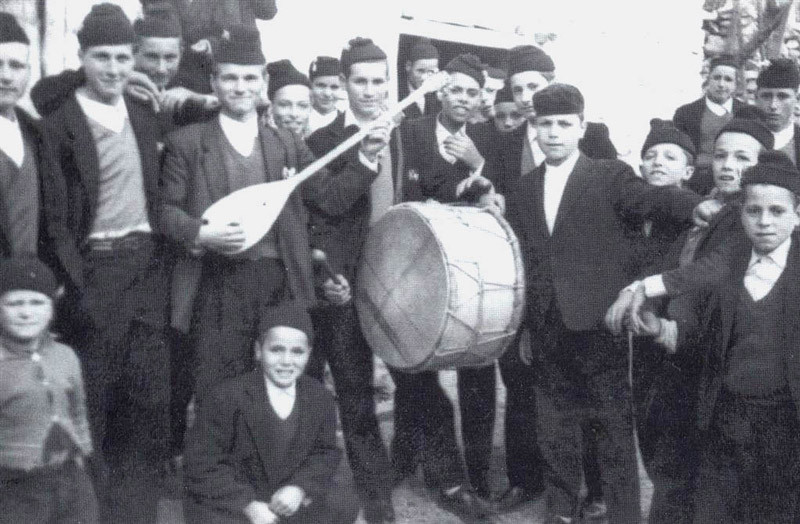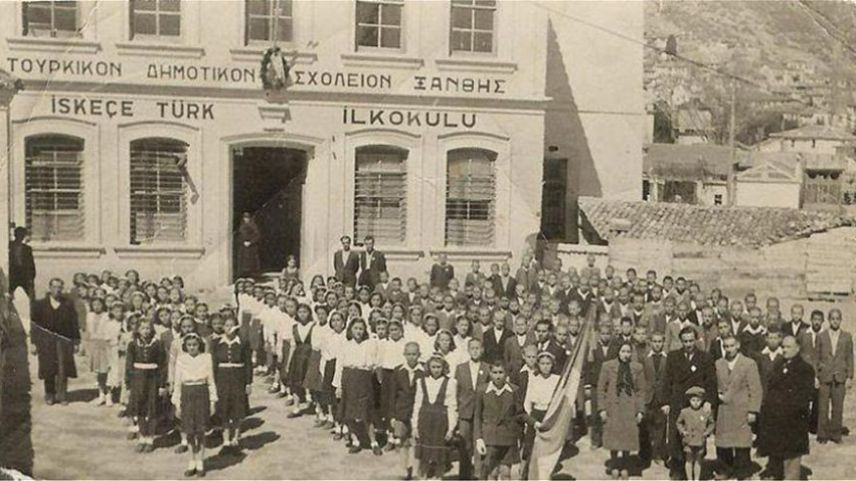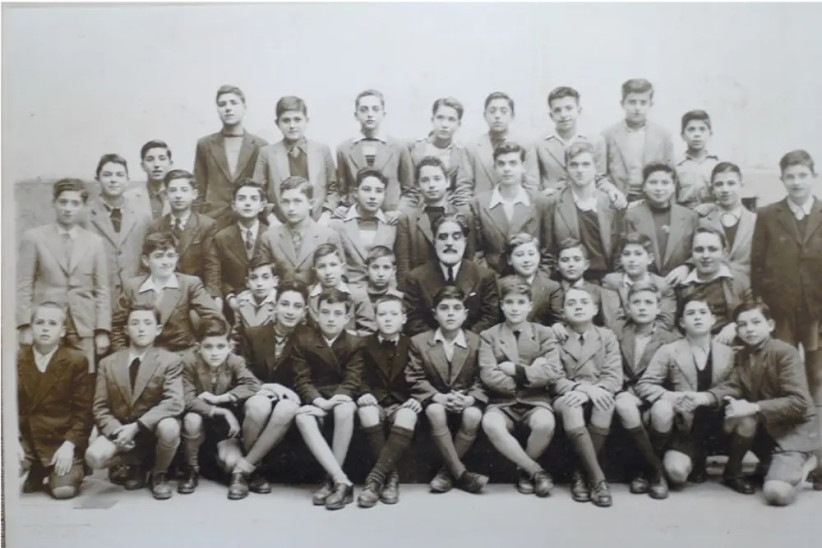In the 4th and final episode of the new Podcast series of SKAI, Angelos Syrigos talks about the Greeks of the city, but also about the differences between the concepts of “Muslim” and “Turkish” minority
With the Turkish side pursuing and constantly triggering tension in Aegeanwe hear and read on a daily basis now for words such as EEZ; shelf; gray zoneseven territorial waters. Words that have been unknown to us so far or at least confused in our minds. How sure we are that we know accurately what each of them mean?
In this New Podcast 4 episode series of SKAI entitled ‘The alphabet of Greek -Turkish relations“, The journalist Stefanos Nikolaidis He discusses with the Professor of International Law at Panteion University and ND MP, Angelfor the importance of basic and fundamental concepts around the Greek -Turkish relations.
To Fourth and last episode of the series, Angel Syrigos talks about them Greeks in Constantinoplebut also for the differences between concepts’Muslim“And”Turkish‘ minority to Thrace. All that foresees the Treaty of Lausanne.
You can hear the whole episode here.
Is the minority in Thrace Muslim or Turkish?
The question is often asked Why the minority in Constantinople is Greek and the Minority in Thrace is Muslim and not Turkish.
The answer first of all is realistic. In Thrace the minority consists of Three different ethnic groups: by them Turkishby them Pomaks and their TSigan. They are not ethnically homogeneous, not all Turks are. Pomaks speak a Slavic language And the Gypsies speak, although they have greatly abducted their language, their own dialect, the Romance. That is the first reason.
But the real reason that the term Turkish minority is not used is due to Turkey.
During the conference in Lausanne, Turkey wanted to give minority rights only to non -Muslims, not to non -Turks.
If the Treaty of Lausanne was applied and said that non -Turks would have minority rights, then minority rights would claim the Kurdsthe Arabsthe Lascreall these dozens of ethnic groups living in Turkey. Turkey said that the non -Muslims of Turkey would take rights. So, as he talked about Thrace, he was a Muslim minority in Thrace. It was Turkey’s requirement Use this term, but it actually responded.
Therefore, the basis was the religion, not the nation and the ethnicity.
What was interested in Turkey at that time was to create a state with single Turkish identity. So he said that anyone who is a Muslim inside the country is also a Turk. This was a continuation of an old perception that existed from the so -called millet. Was the way the Ottoman Empire operates, where it describes a set of people identified on the basis of their religion, regardless of the language you spoke to or the origin you had.
For example, the Turkish -criticwho were talking Greekwere Muslims And they were considered to belong to the dominant Millet, the Ottoman Millet. On the contrary, in Roman Millet may belong to Arabs which were Orthodox; Bulgarian which were Orthodox; Serbs which were Orthodox; Romanian which were Orthodox and so on. This was the distinction in the Ottoman Empire.
So Turkey comes to the logic that those who are Muslims belong to the dominant Millet, the Ottoman, wanted to turn this Ottoman Millet into a Turkish -speaking Millet. He tells them “no rights”. This, of course, was at the expense of minority rights, especially the Kurds, which was the largest group in Turkey. But Kemal was interested in homogeneity of his country and not the performance of minority rights. Wanted to create the Turkish nation and to turn all the Muslims of his country in Turkseven though not all Turks were.
The Greek minority in Constantinople, Imbros and Tenedos
The 1923 It is decided to exchange of populations between Greece and Turkey, or Treaty of Lausannewith two exceptions: those who Muslims they lived between the river Nestos and the Evros River (that is, the three counties Xanthi; Rodopi; Evros ) and those who Greeks lived in Constantinopleto Imbros and at Tenedos. They had the right to remain in their homes.
The two groups, the Muslims of Thrace and the Greeks of Constantinople, Imbros and Tenedou were About the same, about 100,000 people. Of course, when the Treaty of Lausanne began in its implementation, the Greeks of Constantinople were around were around 350,000but with various alchemy the Turks expelled a very large number. The important thing is that the 1930 The two minorities are approximately.
There is another difference between the two minorities. OR minority in Istanbul It was a urban minority. That is, the bulk of the Greeks was bourgeois. There were villagers in Imbros and Tenedos, but the bulk was bourgeois, that is, they lived in a city where they were from a working class to bankers, scientists, but they had nothing to do with land.
The key is that the different urban condition of the two minorities.
In the village, whatever happens, you will continue to cultivate your field. In the city, if you are forbidden to pursue your profession, if your shop is closed, if they forbid you from working as a doctor, as a teacher, you have no other way to live. You will get up to leave. This resulted in Turks from the outset begin to put restrictions on the professions that Greeks could practice And in various ways to begin to gradually reduce the population of the two groups.
The Great Bam with September 1955 and the Ecumenical Patriarchate
Of course, the big bam becomes the 1955 with the Septemberso the Turkish mob, in a completely organized movement, destroys the Constantinople about 5,000 stores and houses and almost all of the churches with the cemetery. Thus, from that time onwards the Fall of the Greek minority in Constantinoplewhich continues the 1963-1964 with expulsion of those who were Greek nationals and had remained in Constantinople after the exchange of populations.
Today we are talking about how we count it. We’re talking about a population 1,500-2,000 people. On the contrary, in the case of the Muslim minority in Thrace we are talking about a number about a number 110,000 people In the three prefectures of Thrace.
Today the reality is that we have a blooming minority On the one hand, the Muslim minority, which He lives in a European state, steadily since 1974 There are its representatives in the Greek Parliamentas there are its representatives in Local government. On the other hand we have a minority, which The last time he elected Member was the 50’s and There are few people left around the Ecumenical Patriarchate.
The main problem of the Ecumenical Patriarchate is the flock. The flock of the Ecumenical Patriarchate was the Greek Orthodox of Constantinople, Imbros and Tenedos. At the moment they have been diminished to a scary degree.
The second problem relates to the subject of Who can become patriarch. Under Turkish laws, to become a patriarch must have Turkish citizenship and to be member of the Holy Synod. In recent years, the Holy Synod has been renewed with Metropolitans coming from other areas of the Ecumenical Throne outside Turkey, which is not necessarily Turkish nationals.
The whole problem is If there will be people of Greek descent who will be Turkish nationals, so that in 50-100 years they can continue the institution of the Ecumenical Patriarchate.
Source: Skai
I have worked in the news industry for over 10 years. I have been an author at News Bulletin 247 for the past 2 years. I mostly cover politics news. I am a highly experienced and respected journalist. I have won numerous awards for my work.














